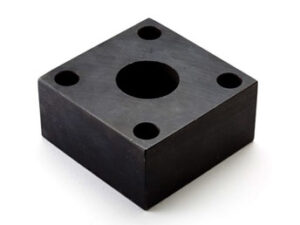Search
Oxidation is a widely used surface treatment process that involves the chemical reaction of a material—typically metal—with oxygen or other chemicals to form an oxide layer. This process is essential in various industries to improve the durability, corrosion resistance, and aesthetic appearance of products. In this blog, we’ll take a closer look at what oxidation is, its applications, and how it benefits different materials and industries.
What is Oxidation?
Oxidation refers to the chemical reaction where a material reacts with oxygen, often forming a thin, protective oxide layer on the surface. This oxide layer can be intentionally developed through specific treatments, such as anodizing in aluminum or creating rust-resistant coatings on steel. Depending on the material and conditions, the oxidation process can vary in complexity, but the general goal is to improve the material’s resistance to wear, corrosion, and environmental degradation.

Types of Oxidation Processes
There are several types of oxidation processes, each tailored for different materials and purposes. For example, anodizing is a common oxidation treatment for aluminum, creating a hard, corrosion-resistant oxide layer. This process is often used in industries like aerospace, automotive, and electronics. For steel, oxidation can be controlled to form rust-resistant coatings, improving the longevity of products exposed to harsh environments. In addition, black oxide treatment is used for steel and stainless steel to provide a matte black finish while offering protection against corrosion.
Benefits of Oxidation
The primary benefit of oxidation is the creation of a protective oxide layer that increases resistance to corrosion, rust, and environmental damage. This layer acts as a barrier that prevents further degradation of the material, extending the lifespan of the product. Oxidation also enhances the material's hardness, improving its wear resistance and making it more suitable for demanding applications. Furthermore, oxidation can provide aesthetic benefits, offering a range of color finishes, such as the distinct matte or glossy finishes found on anodized aluminum.
Applications of Oxidation in Various Industries
Oxidation is utilized across numerous industries, particularly in aerospace, automotive, electronics, and construction. In the aerospace sector, for example, anodized aluminum is favored for its lightweight yet durable qualities, protecting components from the rigors of high-altitude environments. In automotive manufacturing, oxidation treatments improve the durability of metal parts, ensuring they perform well under extreme conditions. Electronics manufacturers also rely on oxidation processes to protect components from corrosion and improve their overall functionality.
Oxidation is an essential surface treatment process that helps improve the performance, durability, and aesthetics of metal components. By forming a protective oxide layer, this process enhances materials' resistance to corrosion, increases their hardness, and provides a variety of finishes suitable for different industries. Whether for industrial, automotive, or electronic applications, oxidation continues to play a vital role in creating long-lasting, high-performance products.